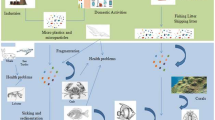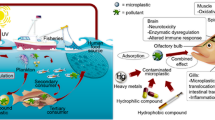Abstract
This article reports a study in which drag coefficient is defined more comprehensively. The coefficient is defined as a function of particle nominal diameter, gravitational acceleration, the ambient fluid kinematic viscosity, and the particle shape. This new definition is different from the conventional definitions proposed in the literature based on direct equations as a function of particle Reynolds number. The conventional definitions appear to be a simplification of drag coefficient and thus decreasing the accuracy of the estimations. Instead, the proposed equation in this article indicates that on average the drag coefficient estimation can be improved at least 3.77% compared to the proposed drag coefficient widely used in the literature. The improved drag coefficient was used to derive a more accurate settling velocity equation in which the effect of particle shape is directly incorporated in the settling velocity equation. Both equations were validated using well known datasets and accurate experiments from the literature as well as new experiments conducted for this purpose in the current research. The experiments cover a wide range of particle shape and a variety of specific gravity. The outcomes of the current study contribute to the use of settling velocity in river hydraulic applications proposing a simpler but more accurate procedure.







Similar content being viewed by others
Abbreviations
- A, B, m :
-
Variables
- A p :
-
Particle projected area
- a, b, c :
-
Particles long, intermediate, and short orthogonal dimensions, respectively
- a 1 , a 2 , a 3 , a 4 , a 5 :
-
Shape factor related variables
- S :
-
Specific gravity of the sediment particle
- g :
-
Gravitational acceleration (m2/s)
- d :
-
Sediment particle diameter (m)
- d n :
-
Sediment particle nominal diameter (m)
- F d :
-
Drag force (N)
- C D :
-
Drag coefficient
- n :
-
Number of experiments
- ω :
-
Settling velocity (m/s)
- ν :
-
Fluid kinematic viscosity (m2/s)
- ρ :
-
Density of the fluid (kg/m3)
- Sf :
-
Corey shape factor
- D * :
-
Dimensionless particle diameter
- V :
-
Particle volume
- Re p :
-
Particle Reynolds number
References
Briggs LI, McCulloch DS, Moser F (1962) The hydraulic shape of sand particles. J Sediment Petrol 32(4):645–656
Camenen B (2007) Simple and general formula for the settling velocity of particles. J Hydraul Eng 133(2):229–233. https://doi.org/10.1061/(asce)0733-9429(2007)133:2(229)
Cheng N (1997) Simplified settling velocity formula for sediment particle. J Hydraul Eng 123(2):149–152. https://doi.org/10.1061/(asce)0733-9429(1997)123:2(149)
Dallavalle J (1948) Micrometrics: the technology of fine particles. Pitman, London
Dioguardi F, Mele DA (2015) New shape dependent drag correlation formula for non-spherical rough particles. Experiments and results. Powder Technol 277:222–230
Gabitto J, Tsouris C (2008) Drag coefficient and settling velocity for particles of cylindrical shape. Powder Technol 183(2):314–322
Graf WH (1984) Hydraulics of sediment transport. Water Resources Publication, Littleton
Guo J (2002) Logarithmic matching and its applications in computational hydraulics and sediment transport. J Hydraul Res 40(5):555–565
Göğüş M, İpekçi O, Kökpinar M (2001) Effect of particle shape on fall velocity of angular particles. J Hydraul Eng 127(10):860–869. https://doi.org/10.1061/(asce)0733-9429(2001)127:10(860)
Julien PY (1995) Erosion and deposition. Cambridge University Press, Cambridge
Komar PD (1980) Settling velocities of circular cylinders at low Reynolds number. J Geol 88(3):327–336
Komar PD, Reimers CE (1978) Grain shape effects on settling rates. J Geol 86(2):193–209
Kuneš J (2012) Dimensionless physical quantities in science and engineering. Elsevier, Amsterdam
McCormick BW (1979) Aerodynamics, aeronautics, and flight mechanics. Wiley, New York, p 24
McNown JS, Malaika J (1950) Effects of particle shape on settling velocity at low Reynolds numbers. Eos Trans Am Geophys Union 31(1):74–82
Oseen CW (1927) Neuere methoden und ergebnisse in der hydrodynamik. Akad Verlag-Ges, Leipzig (in Germany)
Raudkivi AJ (1990) Loose boundary hydraulics, 3rd edn. Pergamon, Tarrytown
Riazi A, Türker U (2017) A genetic algorithm-based search space splitting pattern and its application in hydraulic and coastal engineering problems. Neural Comput Appl 30(12):3603–3612
Rubey WW (1933) Settling velocity of gravel, sand, and silt particles. Am J Sci 25(5):325–338
She K, Trim L, Pope D (2005) Fall velocities of natural sediment particles: a simple mathematical presentation of the fall velocity law. J Hydraul Res 43(2):189–195
Smith D, Cheung K (2003) Settling characteristics of calcareous sand. J Hydraul Eng 129(6):479–483. https://doi.org/10.1061/(asce)0733-9429(2003)129:6(479)
Soulsby R (1997) Dynamics of marine sands: a manual for practical applications. Thomas Telford, London
Stokes GG (1851) On the effect of the internal friction of fluids on the motion of pendulums, vol 9. Pitt Press, Pittsburgh, p 8
Swamee P, Ojha C (1991) Drag coefficient and fall velocity of nonspherical particles. J Hydraul Eng 117(5):660–667. https://doi.org/10.1061/(asce)0733-9429(1991)117:5(660)
Tran-Cong S, Gay M, Michaelides EE (2004) Drag coefficients of irregularly shaped particles. Powder Technol 139(1):21–32
Uhlmann M, Doychev T (2014) Sedimentation of a dilute suspension of rigid spheres at intermediate Galileo numbers: the effect of clustering upon the particle motion. J Fluid Mech 752:310–348
Wadell H (1932) Volume, shape, and roundness of rock particles. J Geol 40:443–451
Wilde RH (1952) Effect of shape on the fall-velocity of gravel-sized particles. Master’s thesis, Colorado A&M College, Colo
Wu W, Wang S (2006) Formulas for sediment porosity and settling velocity. J Hydraul Eng 132(8):858–862. https://doi.org/10.1061/(asce)0733-9429(2006)132:8(858)
Wu W (2007) Computational river dynamics. CRC Press, Boca Raton
Zhang RJ (1989) Sediment dynamics in rivers. Water Resources Press, Beijing. (in Chinese)
Zanke U (1977) Berechnung der sinkgeschwindigkeiten von sedimenten. Mitt. Des Franzius-Instituts fuer Wasserbau. Heft 46, Seite 243, Technical University, Hannover
Acknowledgements
Authors would like to thank Professor Weiming Wu for sharing his valuable dataset and his comments on an earlier draft of this article, and to Professor Mehdi Riazi for his careful reading and editing and his suggestions for the improvement of the text structure. Authors would like to also thank the anonymous reviewers for their helpful and constructive comments that greatly contributed to improving the final version of the article.
Author information
Authors and Affiliations
Corresponding author
Ethics declarations
Conflict of interest
The authors declare that they have no conflict of interest.
Electronic supplementary material
Below is the link to the electronic supplementary material.
Supplementary material 1 (MP4 7297 kb)
Rights and permissions
About this article
Cite this article
Riazi, A., Türker, U. The drag coefficient and settling velocity of natural sediment particles. Comp. Part. Mech. 6, 427–437 (2019). https://doi.org/10.1007/s40571-019-00223-6
Received:
Revised:
Accepted:
Published:
Issue Date:
DOI: https://doi.org/10.1007/s40571-019-00223-6




